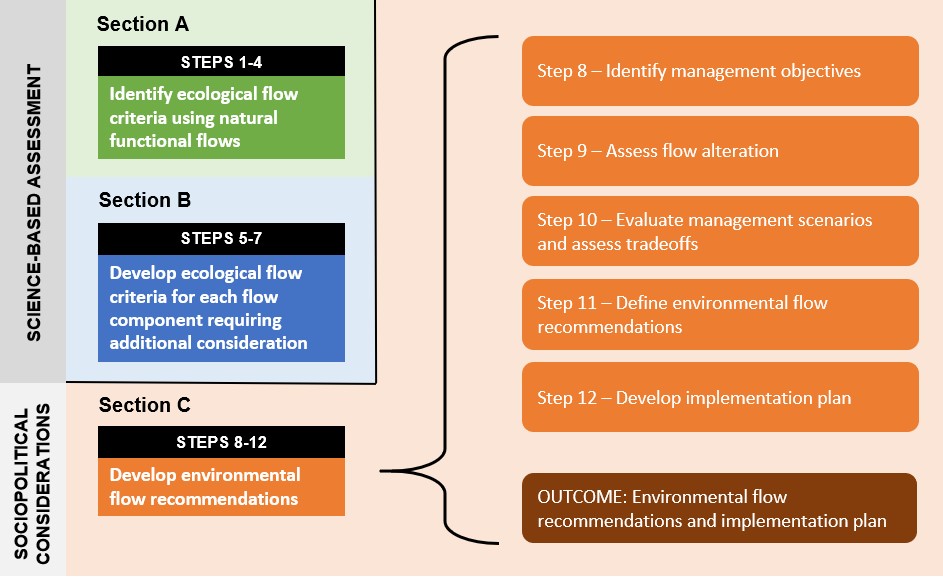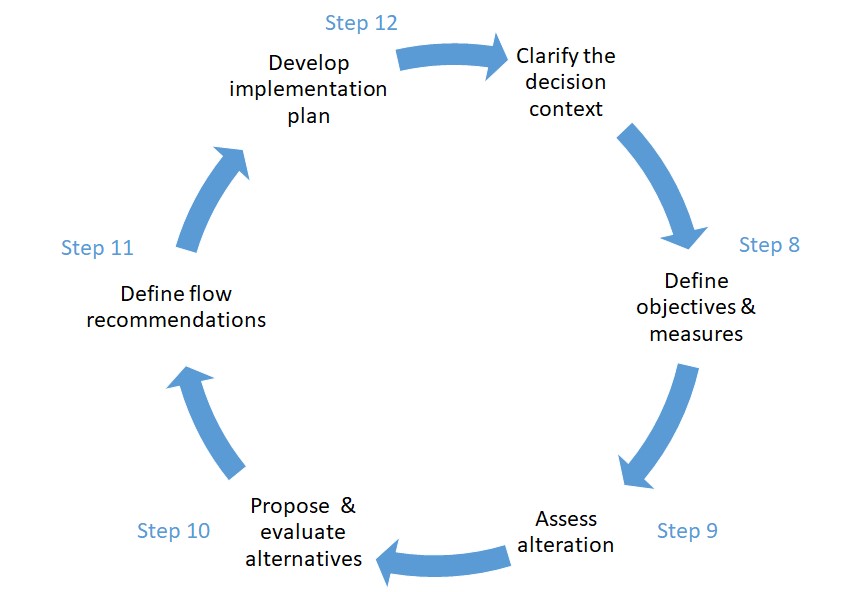Section C: Develop environmental flow recommendations
Section C outlines a process for developing environmental flow recommendations that balance ecological flow needs with other water management objectives. The section represents a transition from a scientific process in which ecological flow criteria are developed (Sections A and B) to a process that incorporates regulatory requirements, social values, and other management needs, including human uses of water, public health and safety needs, and legal and regulatory requirements (Figure C.1). In Section C, the user should be continuing to engage stakeholders to guide development of a final set of environmental flow recommendations, along with an implementation plan for their study area, in collaboration with agency partners.

Figure C.1. Overview of Section C steps.
Section C follows a structured decision making process. Structured Decision Making (Figure C.2) and, in general, the field of Multi-Criteria Decision Analysis (e.g., Gregory and Keeney 2002; Runge et al. 2011) offer a systematic framework to guide development of environmental flow recommendations and similar decision contexts that are characterized by trade-offs and uncertainty. Section C begins with defining management objectives and the legal, regulatory and social context in which environmental flow recommendations are to be developed (Step 8). This section also evaluates existing flow conditions relative to ecological flow criteria to understand the changes in management that may be required (Step 9). Next, a set of management alternatives hypothesized to satisfy all management objectives are developed, and the consequences of each alternative – including trade-offs among objectives – are assessed (Step 10). Then, a preferred management alternative is selected and environmental flow recommendations defined (Step 11). Finally, an implementation plan is developed (Step 12). The plan should include feedback mechanisms to guide future refinement of environmental flow recommendations, following an adaptive management approach (Figure C.2).

Figure C.2. A Structured Decision Making process for developing and implementing environmental flow recommendations, adapted from Failing et al. (2013). Associated Framework Steps 8-12 are indicated in blue.
Because users must take into account numerous sociopolitical considerations that are often site-specific and non-scientific, Section C provides less prescriptive guidance than Sections A and B. Instead, Section C is intended to offer a conceptual framework, including suggested tools, to help the user appropriately balance ecological flow needs with other water management objectives to develop a set of environmental flow recommendations.